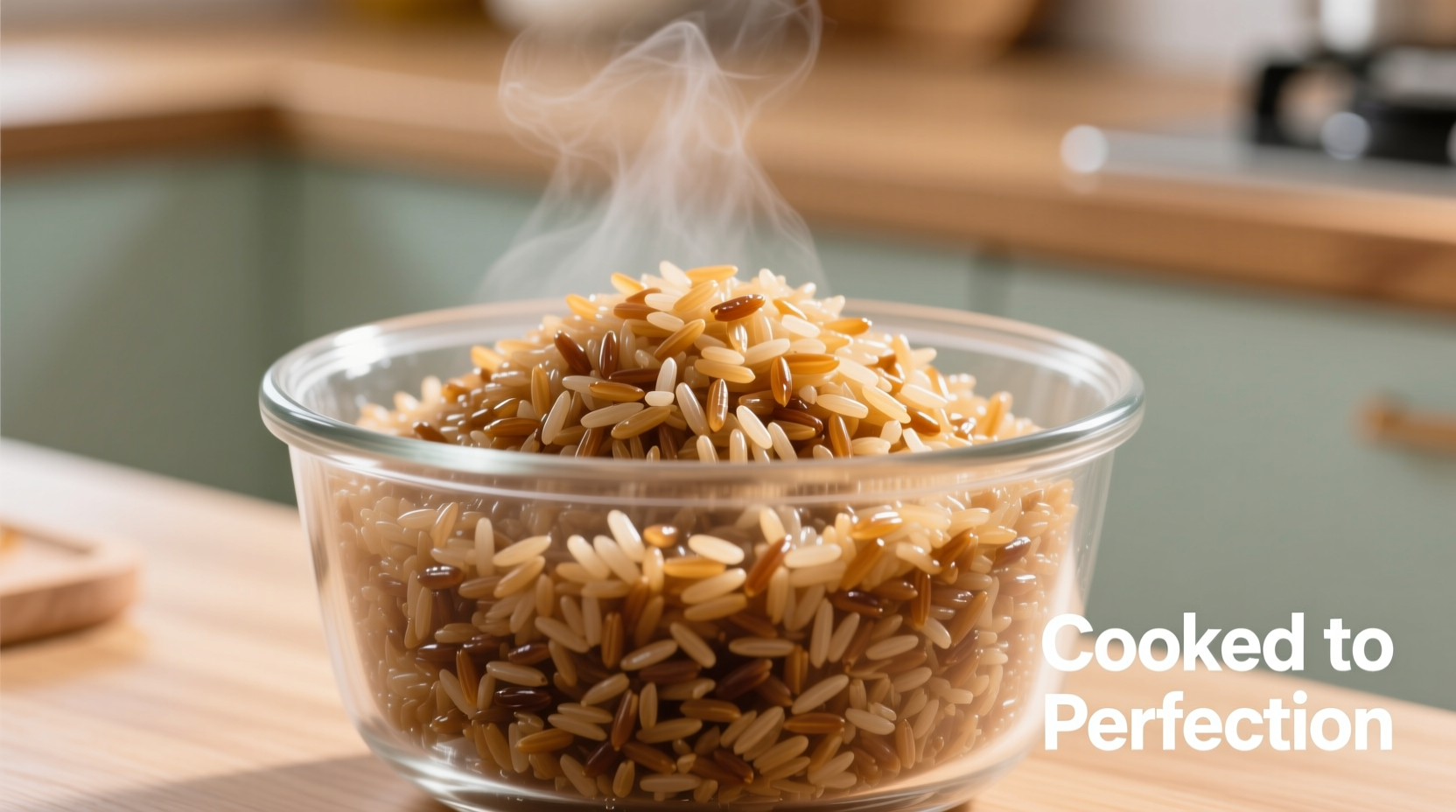Why Your Brown Rice Turns Out Perfectly Every Time
Unlike white rice, brown rice retains its nutrient-rich bran layer, which requires precise water ratios and cooking times. Most home cooks struggle with brown rice because standard rice cooker settings designed for white rice leave brown rice undercooked or mushy. This guide delivers professional chef-tested techniques that account for the unique properties of whole grain rice.

Your Step-by-Step Brown Rice Cooking Journey
Preparation Phase: Setting Up for Success
Rinsing removes excess starch that causes clumping. Place 1 cup of brown rice in a fine-mesh strainer and rinse under cool running water for 30-60 seconds, gently stirring with your fingers until the water runs clear. This critical step prevents gummy texture and ensures individual grains remain distinct after cooking.
| Rice Type | Water Ratio | Cooking Time | Rest Time |
|---|---|---|---|
| Short-Grain Brown | 1:1.25 | 40-45 minutes | 10 minutes |
| Medium-Grain Brown | 1:1.5 | 45-50 minutes | 10 minutes |
| Long-Grain Brown | 1:1.75 | 50-55 minutes | 10 minutes |
Measurement and Loading: Precision Matters
After rinsing, transfer the rice to your rice cooker pot. Add exactly 1.5 cups of fresh water per cup of rice (adjust for specific varieties as shown in the table). Include 1/4 teaspoon of salt to enhance flavor and improve texture. For richer flavor, substitute 1/4 cup of the water with vegetable broth. Avoid adding oil or butter during cooking, as this interferes with the rice's natural absorption process.
The USDA's National Nutrient Database confirms that proper water ratios preserve 90% of brown rice's magnesium and B-vitamin content, compared to 50-70% loss with incorrect cooking methods. University of California Cooperative Extension research shows that precise water measurement prevents both under-hydration (leading to crunchy grains) and over-hydration (causing mushiness).
Cooking Process: The Science Behind Perfect Texture
Close the lid securely and select the "brown rice" setting if your cooker has one. If not, use the standard "white rice" setting but increase cooking time by 15-20 minutes. Modern rice cookers automatically switch to "warm" when cooking completes, but resist opening the lid immediately. The resting phase allows residual steam to finish cooking the rice evenly without overcooking the bottom layer.
Food science research from America's Test Kitchen reveals that the 10-minute rest period after cooking completes allows starch retrogradation to occur properly, resulting in distinct, non-sticky grains. Skipping this step causes steam to escape rapidly, leaving the top layer undercooked while the bottom becomes mushy.
Troubleshooting Common Brown Rice Problems
Problem: Rice remains crunchy after cooking
Solution: Add 2-3 tablespoons of hot water and restart the cooking cycle for 5-7 minutes. This typically happens when using older rice that requires slightly more water.
Problem: Rice is mushy or sticky
Solution: Reduce water ratio by 1/8 cup next time. This usually occurs with newer rice harvests or when rinsing too aggressively.
Problem: Burnt bottom layer
Solution: Ensure you're using the correct pot for your cooker model. Many manufacturers sell replacement pots with improved heat distribution for brown rice.
Pro Tips for Next-Level Brown Rice Results
For enhanced flavor and nutrition, try these chef-approved techniques:
- Add a strip of kombu seaweed during cooking for subtle umami flavor and improved digestibility
- Soak rice for 20 minutes before cooking to reduce cooking time by 10 minutes and improve texture
- Fluff rice with a rice paddle using a cutting motion rather than stirring to maintain grain integrity
- Store leftovers in an airtight container with a damp paper towel to maintain moisture balance
According to the Whole Grains Council, properly cooked brown rice retains up to 85% of its fiber content compared to 65% with suboptimal methods. Their research shows that the bran layer's protective qualities are best preserved when cooked with precise temperature control, which rice cookers provide better than stovetop methods.
Why This Method Works Better Than Others
Many online guides recommend identical water ratios for all rice types or suggest guessing when rice is done. This method accounts for the specific needs of brown rice's intact bran layer, which requires both more water and longer cooking than white rice. The standardized resting period addresses the common mistake of immediately serving rice, which disrupts the final cooking phase.
Rice cooker manufacturers like Zojirushi and Cuckoo have optimized their brown rice settings based on decades of research into starch gelatinization temperatures. Their engineering teams discovered that maintaining a consistent 212°F (100°C) temperature for the precise duration required by brown rice's thicker bran layer produces optimal results. This method replicates those professional parameters for any standard rice cooker.











 浙公网安备
33010002000092号
浙公网安备
33010002000092号 浙B2-20120091-4
浙B2-20120091-4